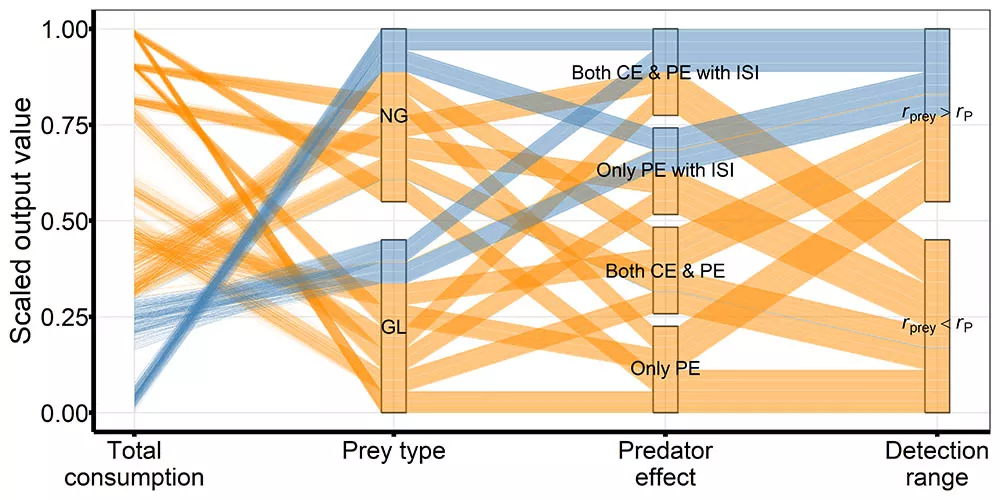Predators negatively influence the size of prey populations partly through their direct consumption and partly through indirect, non-consumptive effects, i.e. by inducing costly predator-avoidance responses. This predation-risk effect can manifest, for instance, in the form of a reduced feeding rate, so predators can also reduce crop damage by altering the behaviour of their herbivore prey. Zoltán Tóth, a researcher from the Plant Protection Institute at the HUN-REN Centre for Agricultural Research (HUN-REN CAR) used computer simulations to investigate whether the use of social information mediated by the behaviour of conspecifics can contribute to the control of herbivore pests, i.e. reducing the number and damage of prey by influencing predators’ direct consumption and enhancing their predation-risk effect. The study was published in the scientific journal Biological Control.
One of the main pillars of integrated pest management is the use of biological control, which seeks to utilize the natural enemies of pests to suppress them. This control strategy is particularly important in systems where options for using insecticides are limited or where pests can easily become resistant to chemical agents. Previous studies have proven that the copying of predator-avoidance behaviour can be present in prey animals even in the absence of group living, and can have similarly important population dynamic consequences as in group-forming species. However, we have very little knowledge about the practical consequences of this, for example in the context of biological control.
In this study, an individual-based model was used to analyse how the functional properties of prey animals, such as the size of the prey’s predator-detection range, the presence of group-forming behaviour, and the detection and copying of each other's predator-avoidance behaviour, influence susceptibility to predation-risk effects. In general, the results showed that the use of social information moderated the effect of predators’ direct consumption on the number of prey animals, especially in group-living prey, but it also increased the extent of the predation-risk effects in most parameter combinations. As a result of the latter, the presence of social information use could contribute to the reduction of the total consumption of prey animals, regardless of the size of the detection ranges and the social organization of the prey. The results of these simulations can help better understand what factors can cause differences in the effectiveness of biological control between different predator-pest systems, and which pest characteristics may contribute to a large reduction in the consumption of pests via their sensitivity to predation-risk effects.

Occurrences of total consumption observations in the explored parameter combinations. Prey type denotes the social organisation of prey (GL: group-living, NG: non-grouping), predator effects indicate the effects that predators exert on the prey population (only PE or both CE & PE) with or without ISI use, and detection range indicates the relation between prey detection range (rprey) and the detection range of predators (rP). Blue lines indicate observations in the first quartile of the output distributions, the rest are shown in orange.